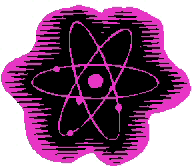

The computer you are using now, utilises a binary system, where every single piece of information is represented by 1’s and 0’s – this corresponds very nicely with the way classical physics represents the world, for example a switch it either on or off; there is no “in-between” state. Quantum computers aren’t limited by this constraint. They depend on observing the state of quantum bits (or qubits) – which might represent a one or a zero, or a combination of the two (i.e. somewhere between zero and one).
1010101010101010101010101010101010101010101010101010101010101010101010
Researchers at IBM have built quantum computers by using nuclear magnetic resonance (NMR) techniques to measure and manipulate the spin of individual atoms. Radio-frequency energy bursts can begin this “computing process” by causing a change in the energy level of an atom. This might then interact with other atoms in a controlled manner, to establish the patterns of quantum computing that correspond to the answers that might be gathered through conventional computers.
1010101010101010101010101010101010101010101010101010101010101010101010
Quantum computers have the potential to take computing to the next level, by providing computers that are millions of times more powerful and faster that today’s top supercomputer.
1010101010101010101010101010101010101010101010101010101010101010101010
Conventional computers process one bit of information or calculation at a time – one of the most significant differences here is the inherent parallelism of quantum computers – which theoretically means they can work on a million calculations at the SAME TIME, whereas your silicon based microcomputer does one calculate and then moves on the next in a cyclic process
.